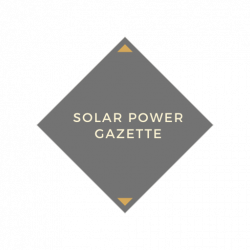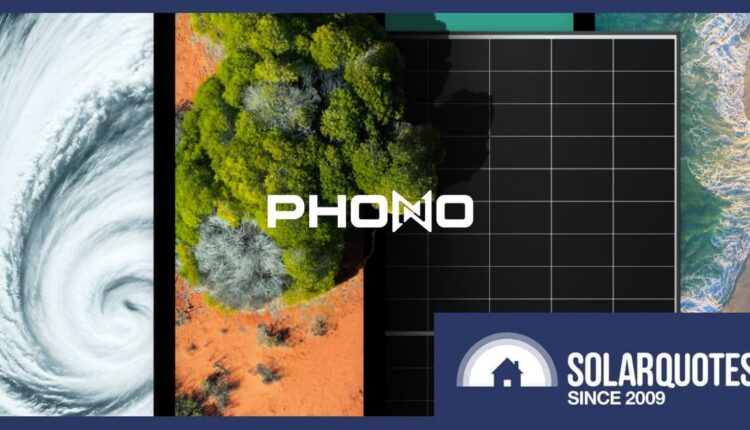475W Phono Quasar solar panel is about to launch in Australia
A number of other high-performance rooftop solar panels being introduced to the Australian market this year include Phono’s Quasar bifacial dual-glass back-contact solar panel, which is expected to begin shipping to local installers from the end of next month.
What are the specifications for the Phono Quasar 475 watt panel?
- Model: PS475L7GFH-18/VBH
- Power: 475 watts (front)
- Cell Type: N-Type Back Contact
- Module efficiency: 23.27%
- Temperature coefficient – -0.26%/°C
- Maximum system voltage 1,500 V DC
- Dimensions: 1800mm x 1134mm x 30mm (just over 2m2)
- Weight: 23.5kg
- Glass: 2.0mm front, 1.6mm rear
- Salt spray certification: up to level 6
- Suitable for cyclones
- “Increased hail tests”
- Product guarantee: 30 years for residential installations.
- Performance Guarantee: 30-year linear performance guarantee at 88.5% of original capacity in the 30th year. (1% allowable deterioration in the first year, 0.35% each year thereafter).
The “enhanced hail test” is a bit puzzling at this point as this datasheet, which is not AU specific and about 4 months old, seems to indicate standard hail testing1. For standard hailstorm resistance tests, the international standard IEC 61215 requires panels to withstand a test with 25 mm diameter ice balls fired at 23 m/s (82.8 km/h).
Delivery to installers does not begin until late December 2025, but the Quasar 475-watt has been listed with the Clean Energy Council since mid-September and is eligible for the Australian solar panel rebate; So it’s ready to rock on that front2.
Commenting on the Quasar, John Degotardi, co-founder of local solar wholesaler Supply Partners, said:
“We believe the new phono panel is one of the best on the market. Back contact plus double glass AND bifacial [sic] is not just for show. It’s about higher energy yield in real homes over decades, with fewer compromises when it comes to heat, wind or salty air. With a 30-year product and performance guarantee for home systems and local support, Phono is significantly better than comparable plastic-backed panels.”
…and usher in the inevitable debate about whether bifacial solar panels3 installed on residential roofs have a positive effect.
Further information on the Phono Quasar 475 Watt can be found here, however at the time of writing there was no link to an Australia specific spec sheet/warranty document either on this page or in the downloads section of Phono’s Australian website.
Phono solar panels in Australia
Phono, or full name Sumec Phono Solar, is a Chinese solar module manufacturer founded in 2004 as a subsidiary of the Sumec Group. Founded in 1978, the company has been supplying panels to Australia since 2010.
Phono has a total annual production capacity of 3 GW and claims to have shipped over 20 GW of modules throughout its history. Although it is very well established, it is still a small player compared to some of the big brands. For example, JinkoSolar – which began producing modules in 2009 – recorded cumulative shipments of 320 GW through May this year.
Phono solar panels are currently listed in SolarQuotes’ Recommended Solar Panels table. In terms of price, they are not the cheapest – but not the most expensive either. We don’t have the Quasar on our solar panel comparison chart yet, but you can compare the specs of another phono model, Helios, with a range of panels from other brands.
As for the opinions of Australians who have purchased the company’s equipment, reviews of phono solar panels here on SolarQuotes have been generally positive; An average of 4.7 stars overall and 4.9 stars in the last 12 months – although only 18 reviews were submitted in the last year.
More powerful panels introduced in 2025
Other large capacity rooftop modules announced or launched for Australia this year include Aiko’s 500W Monster, Trina’s Vertex S+ 475W, TW Solar TWMNH 470W, Risen Energy’s RSM96-11 475W and Winaico WST-475BDX54-B2 475W.
The Phono Quasar 475-watt module was launched at All-Energy Australia in Melbourne late last month. Finn Peacock, founder of SolarQuotes, highlighted some of the many other products on display; From MC connectors to home batteries, check out his All Energy test video here.
Are you confused about your module selection? Learn more about choosing the best solar panels for your home.
Footnotes
- And there are some other differences too, such as the weight: 25kg and the glass on the back: 2mm – which explains the extra weight. ↩
- I also noticed that 480W, 485W, 490W and 495W Quasar modules are on the CEC approved list. But there was no mention, to my knowledge, if/when they might be available here. ↩
- Bifacial modules use not only the solar energy from the front, but also the light that hits/reflects on the back of the module. ↩



Comments are closed.